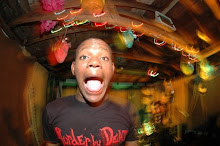Tender Buttons by Gertrude Stein is a collection of many short poems divided into three sections. These sections include Objects, Food, and Rooms. The section that I read most of was the first section, Objects. All of these short poems range from as little as one line, to as many as about 15 lines. Many of the poems are abstract and are nowhere near the traditional form of what a poem 'should be'. Many of the object poems are named after objects. Examples include, “A Box”, “A Red Stamp”, and “A Piece of Coffee”.
At first glance I felt that these poems made no sense at all. But if you take a deeper look, you can see that Stein is simply experimenting with several things in these poems. She plays a lot with imagery, repetition, and alliteration. In the poem “A Red Hat”, which happens to be my favorite of the Object poems, she begins it with, "A dark grey, a very dark grey, a quite dark grey is monstrous ordinarily, it is so monstrous because there is no red in it." Here we see the repetition of the 'very dark grey' image as well as the 'monstrous' description of whatever she may be talking about. It may be a red hat, because it was no red in it, but it may also be a red hat. There's no telling with her. The rest of the poem continues with, "If red is in everything it is not necessary. Is that not an argument for any use of it and even so is there any place that is better, is there any place that has so much stretched out."
I was looking to see if there was much in common with these objects, and the only similarity that I see in these objects is that they're all really random objects. Many of them have descriptions such as color, and some are described in a weird way like, “A Piece of Coffee” and “A Brown”. Though her style is extremely different and isn't liked by many people, it is a refreshing style of writing. I was a little thrown off at first, but I found it to be interesting because it made me think a little harder to figure out what she was trying to say. I think that Stein has chosen many of these random objects because, to me at least, some of these objects are everyday things that I don’t really pay much attention to. She takes objects such as tables, chairs, shoes, and even sounds, and takes a deeper look at it. It seems as if she’s looking at it was another eye we don’t always use and uses that eye to look beyond the surface of it. It is definitely and interesting way to approach these objects and poetry. It’s a shame that this type of poetry isn’t as popular, because of it being so abstract, but I guess it’s alright because it seems a little bit more exclusive where it currently is.
Subscribe to:
Post Comments (Atom)

No comments:
Post a Comment